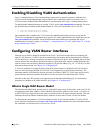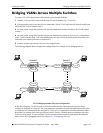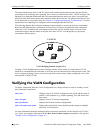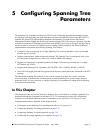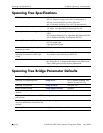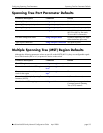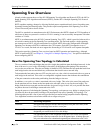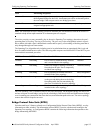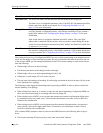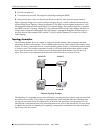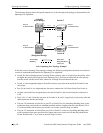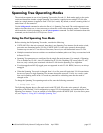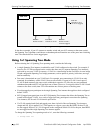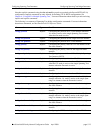
Spanning Tree Overview Configuring Spanning Tree Parameters
page 5-6 OmniSwitch 6600 Family Network Configuration Guide April 2006
The sending and receiving of Configuration BPDU between switches participating in the bridged network
is how the root bridge is elected and the best path to the root is determined and then advertised to the rest
of the network. BPDU provide enough information for the STP software running on each switch to deter-
mine the following:
• Which bridge will serve as the root bridge.
• The shortest path between each bridge and the root bridge.
• Which bridge will serve as the designated bridge for the LAN.
• Which port on each bridge will serve as the root port.
• The port state (forwarding or discarding) for each bridge port based on the role the port will play in the
active Spanning Tree topology.
The following events trigger the transmitting and/or processing of BPDU in order to discover and main-
tain the Spanning Tree topology.
• When a bridge first comes up, it assumes it is the root and starts transmitting Configuration BPDU on
all its active ports advertising its own bridge ID as the root bridge ID.
• When a bridge receives BPDU on its root port that contains more attractive information (higher prior-
ity parameters and/or lower path costs), it forwards this information on to other LANs to which it is
connected for consideration.
• When a bridge receives BPDU on its designated port that contains information that is less attractive
(lower priority values and/or higher path costs), it forwards its own information to other LANs to
which it is connected for consideration.
STP evaluates BPDU parameter values to select the best BPDU based on the following order of prece-
dence:
1 The lowest root bridge ID (lowest priority value, then lowest MAC address).
Root ID The Bridge ID for the bridge that this bridge believes is the root.
Root Path Cost The sum of the Path Costs that lead from the root bridge to this bridge port.
The Path Cost is a configurable parameter value. The IEEE 802.1D standard specifies a
default value that is based on port speed. See “Configuring Port Path Cost” on
page 5-23 for more information.
Bridge ID An eight-byte hex value that identifies this bridge within the Spanning Tree. The first
two bytes contain a configurable priority value and the remaining six bytes contain a
bridge MAC address. See “Configuring the Bridge Priority” on page 5-14 for more
information.
Each switch chassis is assigned a dedicated base MAC address. This is the MAC
address that is combined with the priority value to provide a unique Bridge ID for the
switch. For more information about the base MAC address, the OmniSwitch 6600 Fam-
ily Hardware Users Guide.
Port ID A 16-bit hex value that identifies the bridge port that transmitted this BPDU. The first 4
bits contain a configurable priority value and the remaining 12 bits contain the physical
switch port number. See “Configuring Port Priority” on page 5-22 for more information.



